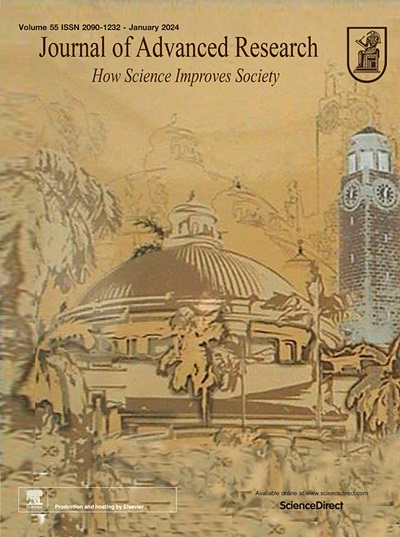Impaired microglial glycolysis promotes inflammatory responses after intracerebral haemorrhage via HK2-dependent mitochondrial dysfunction
IF 11.4
1区 综合性期刊
Q1 MULTIDISCIPLINARY SCIENCES
引用次数: 0
Abstract
Introduction
Intracerebral haemorrhage (ICH) is a devastating disease that leads to severe neurological deficits. Microglia are the first line of defence in the brain and play a crucial role in neurological recovery after ICH, whose activities are primarily driven by glucose metabolism. However, little is known regarding the status of glucose metabolism in microglia and its interactions with inflammatory responses after ICH.
Objectives
This study investigated microglial glycolysis and its mechanistic effects on microglial inflammation after ICH.
Methods
We explored the status of glucose metabolism in the ipsilateral region and in fluorescence-activated-cell-sorting-isolated (FACS-isolated) microglia via 2-deoxy-[18F]fluoro-D-glucose positron emission tomography (FDG-PET) analyses and gamma emission, respectively. Energy-related targeted metabolomics, along with 13C-glucose isotope tracing, was utilised to analyse glycolytic products in microglia. Mitochondrial membrane potential and mitochondrial reactive oxygen species (MitoROS) accumulation was assessed by flow cytometry. Behavioural, western blotting, gene regulation, and enzymatic activity analyses were conducted with a focus on microglia.
Results
Neurological dysfunction was strongly correlated with decreased FDG-PET signals in the perihaematomal region, where microglial uptake of FDG was reduced. The decreased quantity of glucose-6-phosphate (G-6-P) in microglia was attributed to the downregulation of glucose transporter 1 (GLUT1) and hexokinase 2 (HK2). Enhanced inflammatory responses were driven by HK2 suppression via decreased mitochondrial membrane potential, which could be rescued by MitoROS scavengers. HK inhibitors aggravated neurological injury by suppressing FDG uptake and enhancing microglial inflammation in ICH mice.
Conclusion
These findings indicate an unexpected metabolic status in pro-inflammatory microglia after ICH, consisting of glycolysis impairment caused by the downregulation of GLUT1 and HK2. Additionally, HK2 suppression promotes inflammatory responses by disrupting mitochondrial function, providing insight into the mechanisms by which inflammation may be facilitated after ICH and indicating that metabolic enzymes as potential targets for ICH treatment.
小胶质细胞糖酵解受损会通过 HK2 依赖性线粒体功能障碍促进脑出血后的炎症反应。
简介脑出血(ICH)是一种破坏性疾病,会导致严重的神经功能缺损。小胶质细胞是大脑的第一道防线,在 ICH 后的神经功能恢复中发挥着至关重要的作用,其活动主要由葡萄糖代谢驱动。然而,人们对小胶质细胞的葡萄糖代谢状况及其与 ICH 后炎症反应的相互作用知之甚少:本研究调查了小胶质细胞糖酵解及其对 ICH 后小胶质细胞炎症的机理影响:方法:我们通过2-脱氧-[18F]氟-D-葡萄糖正电子发射断层扫描(FDG-PET)分析和伽马射线发射,分别探讨了同侧区域和荧光激活细胞分拣分离(FACS-分离)小胶质细胞的葡萄糖代谢状况。能量相关靶向代谢组学以及 13C 葡萄糖同位素追踪技术被用来分析小胶质细胞中的糖酵解产物。线粒体膜电位和线粒体活性氧(MitoROS)积累通过流式细胞术进行评估。以小胶质细胞为重点进行了行为、Western 印迹、基因调控和酶活性分析:结果:神经功能障碍与血液周围区域的 FDG-PET 信号减少密切相关,小胶质细胞对 FDG 的吸收减少。小胶质细胞中葡萄糖-6-磷酸(G-6-P)数量的减少归因于葡萄糖转运体 1(GLUT1)和己糖激酶 2(HK2)的下调。线粒体膜电位降低导致 HK2 受抑制,从而加剧了炎症反应。HK 抑制剂通过抑制 FDG 摄取和增强 ICH 小鼠的微神经胶质细胞炎症,加重了神经损伤:这些研究结果表明,ICH 后促炎性小胶质细胞的代谢状态出乎意料,包括 GLUT1 和 HK2 下调导致的糖酵解损伤。此外,HK2 的抑制通过破坏线粒体功能促进炎症反应,为了解 ICH 后促进炎症的机制提供了见解,并表明代谢酶是 ICH 治疗的潜在靶点。
本文章由计算机程序翻译,如有差异,请以英文原文为准。
求助全文
约1分钟内获得全文
求助全文
来源期刊

Journal of Advanced Research
Multidisciplinary-Multidisciplinary
CiteScore
21.60
自引率
0.90%
发文量
280
审稿时长
12 weeks
期刊介绍:
Journal of Advanced Research (J. Adv. Res.) is an applied/natural sciences, peer-reviewed journal that focuses on interdisciplinary research. The journal aims to contribute to applied research and knowledge worldwide through the publication of original and high-quality research articles in the fields of Medicine, Pharmaceutical Sciences, Dentistry, Physical Therapy, Veterinary Medicine, and Basic and Biological Sciences.
The following abstracting and indexing services cover the Journal of Advanced Research: PubMed/Medline, Essential Science Indicators, Web of Science, Scopus, PubMed Central, PubMed, Science Citation Index Expanded, Directory of Open Access Journals (DOAJ), and INSPEC.
 求助内容:
求助内容: 应助结果提醒方式:
应助结果提醒方式:


